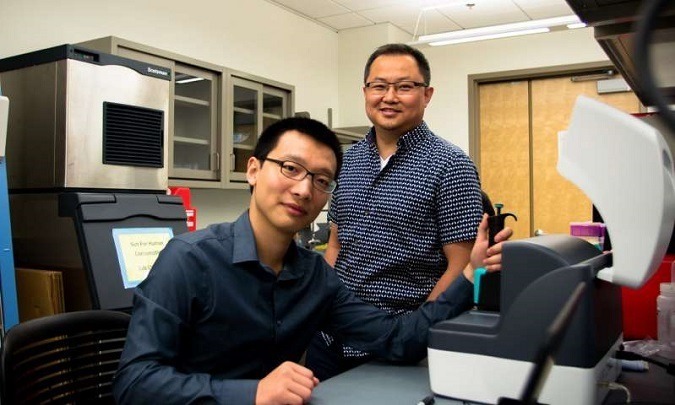Epigenetics research opens potential door to prevent neurodevelopmental disorders

Sai Ma, former Virginia Tech biomedical engineering Ph.D. student, and Chang Lu, the Fred W. Bull professor of Chemical Engineering at Virginia Tech. Credit: Virginia Tech
___
Epigenetic Changes Guide Development of Different Brain Regions (Dana Foundation):
“It’s one of the greatest standing mysteries in neuroscience: Given that each cell in the human body contains the same DNA, how, exactly, does the brain develop into distinct functional regions, supported by different cell types? And how might that developmental program go awry, resulting in neurodevelopmental disorders like schizophrenia or autism? The answers may be the epigenome, or program of specific DNA modifications that affect where, when, and how much a particular gene will be expressed. Researchers at Virginia Polytechnic Institute and State University (Virginia Tech) have recently discovered significant epigenetic differences when comparing cells in the cerebellum and the prefrontal cortex of the mouse brain … West says. “The cerebellum develops after birth and it’s entirely possible that its organization is more vulnerable to certain kind of insults—insults that can affect the brain’s overall circuitry. Maybe there is some common biological process, some change to the epigenome, that results in the kind of problems we see in neurodevelopmental disorders” …
“If we can understand the genetics and the epigenetics of the healthy brain—and then what’s different in a variety of neurological or neuropsychiatric diseases, we’ll be in a position to use these new technologies to intervene in the circuitry before things go wrong,” he (Chang Lu, chemical engineer at Virginia Tech) says. “This could lead to discoveries that are of direct clinical relevance.”
The Study:
Low-input and multiplexed microfluidic assay reveals epigenomic variation across cerebellum and prefrontal cortex (ScienceAdvances)
- Abstract: Extensive effort is under way to survey the epigenomic landscape of primary ex vivo tissues to establish normal reference data and to discern variation associated with disease. The low abundance of some tissue types and the isolation procedure required to generate a homogenous cell population often yield a small quantity of cells for examination. This difficulty is further compounded by the need to profile a myriad of epigenetic marks. Thus, technologies that permit both ultralow input and high throughput are desired. We demonstrate a simple microfluidic technology, SurfaceChIP-seq, for profiling genome-wide histone modifications using as few as 30 to 100 cells per assay and with up to eight assays running in parallel. We applied the technology to profile epigenomes using nuclei isolated from prefrontal cortex and cerebellum of mouse brain. Our cell type–specific data revealed that neuronal and glial fractions exhibited profound epigenomic differences across the two functionally distinct brain regions.
The Study in Context:
- Understand your connectome, understand yourself
- A new era of brain cartography, powered by neuroimaging and machine learning
- Study: Both maternal and parental obesity linked to young children’s neurodevelopmental delays
- Large study to study impact on early brain development of financial assistance to low-income mothers


